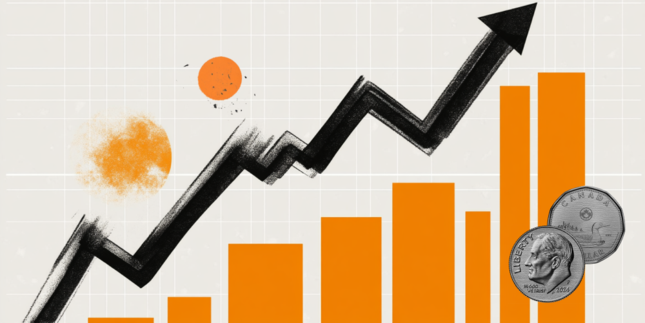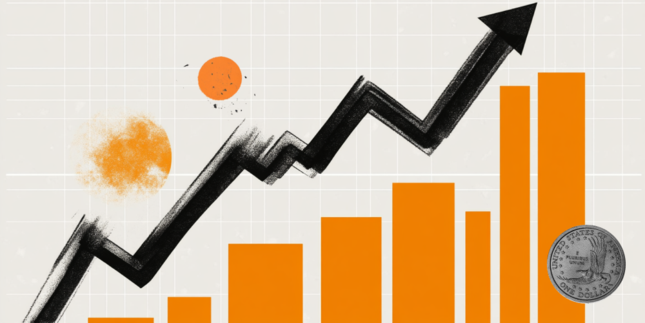USD/INR weakens following Indian WPI inflation data
- The Indian Rupee rebounds in Tuesday’s early European session.
- India’s WPI inflation rose to 2.37% in December from 1.89% in November.
- A surge in oil prices, continued outflows from foreign investors, and a rally in USD might cap the INR's upside.
- The US December PPI reports will be in the spotlight later on Tuesday.
The Indian Rupee (INR) recovers some lost ground on Tuesday after reaching a fresh all-time low in the previous session. Data released by the Ministry of Commerce and Industry on Tuesday showed that India’s Wholesale Price Index (WPI) inflation rose to 2.37% in December from the previous reading of 1.89%. This figure came in hotter than the expectation of 2.30%.
The local currency gathers strength in an immediate reaction to the inflation data. The Reserve Bank of India (RBI) is likely to intervene to slow down the INR's depreciation, selling the USD in the spot and the forward markets. However, the local currency remains fragile amid a rise in crude oil prices and a massive withdrawal of foreign capital from Indian equities. Additionally, a stronger US Dollar (USD) after upbeat US employment data led to an expectation that the US Federal Reserve (Fed) will go for fewer interest rate cuts this year, dragging the INR lower.
Looking ahead, traders will monitor the US Producer Price Index (PPI) for December, which will be released later on Tuesday. Also, the Fed Kansas City President Jeff Schmid is set to speak later in the day.
Indian Rupee remains vulnerable amid multiple headwinds
- India’s retail inflation rate, measured by the Consumer Price Index (CPI), eased to 5.22% YoY in December from 5.48% in November, according to the Ministry of Statistics and Programme Implementation on Monday. This reading came in softer than the expectation of 5.3%.
- India’s Consumer Food Price Index (CFPI), which measures food inflation, recorded a year-on-year increase of 8.39% for December 2024.
- "RBI will allow the weakness as demand keeps moving up and supplies dwindle," said Anil Kumar Bhansali, Head of Treasury and Executive Director, Finrex Treasury Advisors LLP.
- The Indian central bank on Friday noted that the country's forex reserves in the week ended January 3 declined by USD 5.693 billion to USD 634.585 billion.
- Global funds have pulled about $2 billion from local shares so far this year and sold a net $705.5 million of fixed-income securities on January 8.
- Markets are now pricing in one rate cut from the Fed in 2025, down from roughly two quarter-point cuts priced at the start of the year.
USD/INR maintains the positive picture, overbought RSI warrants caution for bulls in the near term
The Indian Rupee trades firmer on the day. The bullish outlook of the USD/INR pair remains intact as the price has formed higher highs and higher lows while holding above the key 100-day Exponential Moving Average (EMA) on the daily chart. Nonetheless, further consolidation cannot be ruled out as the 14-day Relative Strength Index (RSI) moves beyond the 70.00 mark, indicating the overbought condition.
The first upside target to watch is an all-time high of 86.69. A decisive bullish breakout above this level could pave the way to the 87.00 psychological level.
On the other hand, the initial support level for the pair emerges at 85.85, the low of January 10. A move back below the mentioned level could see a drop to 85.65, the low of January 7, followed by 85.00, a round figure.
Inflation FAQs
Inflation measures the rise in the price of a representative basket of goods and services. Headline inflation is usually expressed as a percentage change on a month-on-month (MoM) and year-on-year (YoY) basis. Core inflation excludes more volatile elements such as food and fuel which can fluctuate because of geopolitical and seasonal factors. Core inflation is the figure economists focus on and is the level targeted by central banks, which are mandated to keep inflation at a manageable level, usually around 2%.
The Consumer Price Index (CPI) measures the change in prices of a basket of goods and services over a period of time. It is usually expressed as a percentage change on a month-on-month (MoM) and year-on-year (YoY) basis. Core CPI is the figure targeted by central banks as it excludes volatile food and fuel inputs. When Core CPI rises above 2% it usually results in higher interest rates and vice versa when it falls below 2%. Since higher interest rates are positive for a currency, higher inflation usually results in a stronger currency. The opposite is true when inflation falls.
Although it may seem counter-intuitive, high inflation in a country pushes up the value of its currency and vice versa for lower inflation. This is because the central bank will normally raise interest rates to combat the higher inflation, which attract more global capital inflows from investors looking for a lucrative place to park their money.
Formerly, Gold was the asset investors turned to in times of high inflation because it preserved its value, and whilst investors will often still buy Gold for its safe-haven properties in times of extreme market turmoil, this is not the case most of the time. This is because when inflation is high, central banks will put up interest rates to combat it. Higher interest rates are negative for Gold because they increase the opportunity-cost of holding Gold vis-a-vis an interest-bearing asset or placing the money in a cash deposit account. On the flipside, lower inflation tends to be positive for Gold as it brings interest rates down, making the bright metal a more viable investment alternative.
Forex News
Keep up with the financial markets, know what's happening and what is affecting the markets with our latest market updates. Analyze market movers, trends and build your trading strategies accordingly.


















